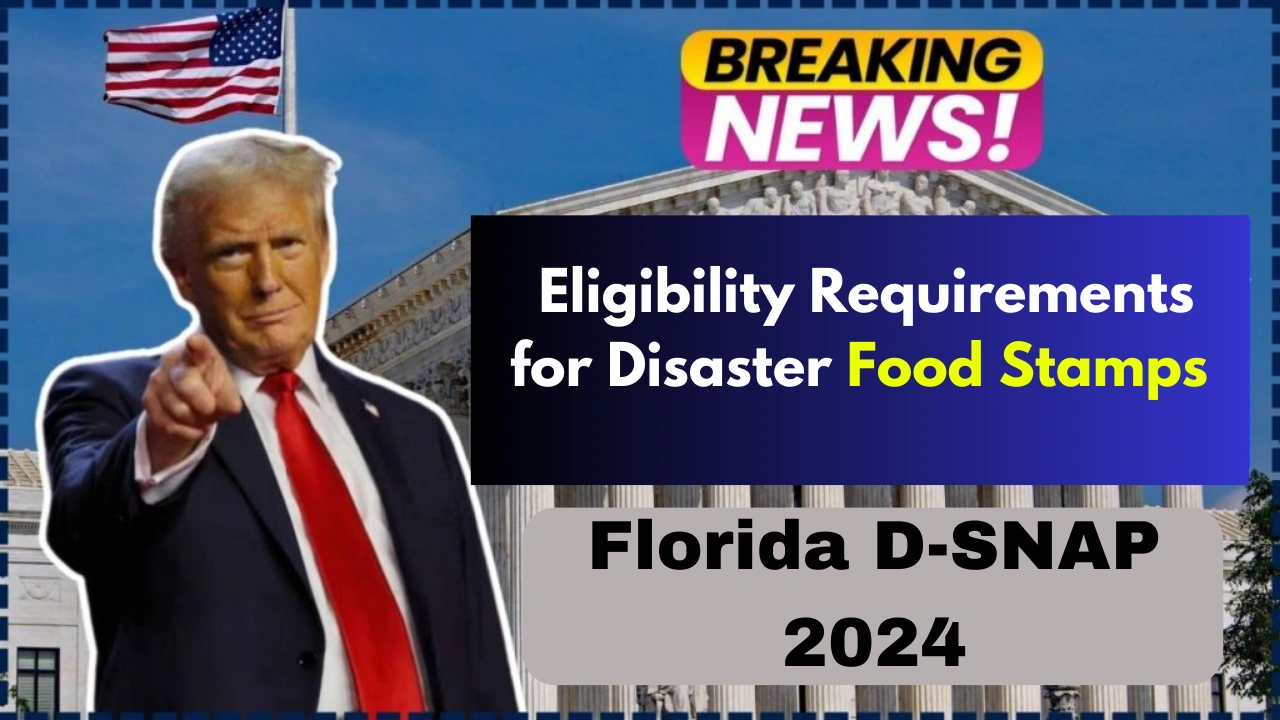When natural disasters like hurricanes or floods strike, rebuilding your life can be a daunting task, especially when it comes to securing food. For Florida residents facing such challenges, the Disaster Supplemental Nutrition Assistance Program (D-SNAP) provides temporary food assistance. This program is designed to support individuals and families who may not qualify for regular SNAP benefits but find themselves in urgent need due to a disaster.
This article provides an in-depth look at D-SNAP eligibility, application steps, deadlines, and helpful tips for securing assistance. Whether you’re applying for the first time or are familiar with the process, understanding these key elements can help you access much-needed support during difficult times.
What is D-SNAP and Why It Matters
The Disaster Supplemental Nutrition Assistance Program (D-SNAP), administered by the Florida Department of Children and Families in partnership with federal authorities, offers crucial food assistance to residents in disaster-affected areas. It helps those who have lost wages, property, or incurred other unexpected expenses due to a natural disaster.
D-SNAP benefits are provided for a limited time and only to individuals and families who are not currently receiving regular SNAP assistance. For instance, after Hurricane Ian in 2022, many Floridians qualified for these benefits. Each disaster declaration triggers a unique D-SNAP application period, which has specific deadlines, so it’s important to apply as soon as possible.
D-SNAP Eligibility Requirements in 2024
To qualify for D-SNAP, applicants must meet three essential criteria:
- Residency: You must live or work in a county that has been declared a disaster area by the federal government.
- Disaster-Related Losses: Applicants must show proof of losses or expenses directly caused by the disaster. These may include:
- Home damage: Structural damage to your primary residence.
- Income loss: Reduction or complete loss of income due to the disaster.
- Food spoilage: Loss of food due to power outages.
- Other disaster-related expenses: Temporary lodging, repairs, or transportation costs.
- Income and Asset Limits: Income eligibility is adjusted annually based on household size. For example, for Hurricane Ian in 2022, the income limit for a three-person household was $2,737 per month. These limits change with each disaster, so be sure to check the latest updates on the Florida D-SNAP page.
Examples of Eligible Losses
Here are a few common disaster-related losses that may make you eligible for D-SNAP:
- Flood damage: If your home flooded and you had to pay for temporary accommodation or repairs, these expenses count toward eligibility.
- Lost wages: If your workplace shut down because of the disaster, resulting in lost income, you could qualify.
- Food spoilage: If a prolonged power outage caused refrigerated or frozen food to spoil, you can document this loss as part of your application.
How to Apply for D-SNAP Disaster Food Stamps in Florid
The application process for D-SNAP involves a few important steps: pre-registration, an interview, and verifying your disaster-related losses. Here’s a step-by-step guide:
Step 1: Pre-Register Online
Pre-registration is an essential first step that alerts the authorities of your intent to apply for D-SNAP benefits. During this phase, you will provide basic details about your household, income, and disaster-related losses. Pre-registration is only open for a short time following a disaster, so be sure to act quickly.
Tips for Successful Pre-Registration:
- Ensure accuracy: Double-check that all information, including household members and income details, is correct.
- Meet the deadline: Make sure to register before the cutoff date for your county.
- Use official resources: For accurate information, visit myflfamilies.com/DSNAP.
Step 2: Schedule and Complete an Interview
After pre-registering, you must complete a brief interview to confirm your eligibility. Interviews can be conducted either in person or over the phone, and appointments are typically organized by county and by the first letter of your last name.



